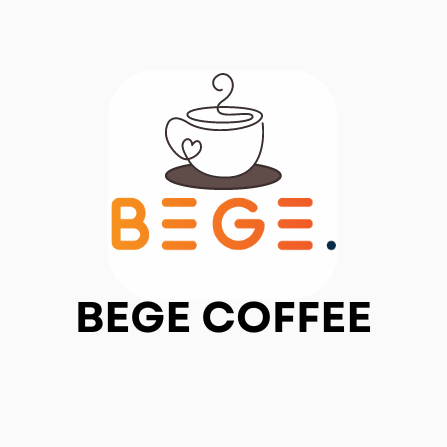What is the best home coffee roaster?

Roasting your own coffee beans at home is one of the most fulfilling experiences for coffee aficionados. You may create a genuinely personalized coffee experience by roasting your own beans, which gives you control over their freshness, flavor, and roast level. But how do you pick the best coffee roaster for your home when there are so many options? We'll look at several kinds of home roasters in this article and assist you in selecting the one that best meets your requirements.
Why Roast Coffee at Home?
Let's examine the reasons behind the rise in popularity of home coffee roasting before delving into the top models. You receive the following when you roast your own coffee:
- Unmatched Freshness: Within a few days of roasting, coffee reaches its best flavor.
- Regulate the Roast Level You can adjust each batch to your preferred roast level, whether you want light, medium, or dark.
- Savings: Compared to pre-roasted beans, green coffee beans are frequently less expensive, offering you greater value.
- Experimentation: You can try out various roasting methods and find new tastes.
Let's now examine a few of the top coffee roasters for homes.
1- The Conventional Approach with a Cast Iron Skillet

A cast iron skillet is a terrific option if you're searching for an easy and affordable way to roast coffee at home. Although it takes more work by hand, this approach allows you complete control over the roast.
Advantages:
Cheap and simple to locate
No electricity is needed.
Excellent for small quantities
Cons:
requires frequent swirling to guarantee uniform roasting.
can emit smoke, hence adequate ventilation is required.
It's challenging to keep the heat steady.
Ideal for:
do-it-yourselfers and coffee roasting lovers who prefer a hands-on approach.
How to Apply:
Over medium heat, preheat your cast iron skillet.
Stir constantly after adding the green coffee beans.
Listen for the first and second cracks and keep an eye on the color.
Remove the beans and quickly cool them once the desired roast (light, medium, or dark) has been reached.
2- Quick and Even Roasting with Hot Air Coffee Roasters

In order to provide an equal roast, a hot air coffee roaster, sometimes referred to as a fluid bed roaster, heats and moves the beans using a stream of hot air.
Advantages:
Even and consistent roasting
Quick roasting (often less than ten minutes)
Simple enough for novices to use
Cons:
Capacity restriction (small batch sizes)
noisy
Decreased authority over roasting profiles
Ideal for:
Coffee drinkers that like a roasting process that is quick, simple, and requires little manual labor.
Well-liked Hot Air Roaster:
The FreshRoast SR800 is a fantastic low-cost choice that lets customers change the temperature and fan speed.
3- Professional-Style Coffee Roasting with Drum Coffee Roasters



One of the closest home substitutes for commercial coffee roasting equipment is a drum coffee roaster. It regulates time and temperature while roasting the beans uniformly using a revolving drum.
Advantages:
Outstanding heat dispersion for uniform roasting
More room for bigger batches
enables greater roasting profile flexibility
Cons:
More costly than alternative techniques
Needs additional room
Beginners may experience a slight learning curve.
Ideal for:
Serious home roasters who desire control over their roasting process comparable to that of a professional.
Well-known drum roasters:
Behmor 2000AB Plus: Provides smoke reduction features and programmable settings.
The Gene Café CBR-101 roasts food evenly thanks to a special off-axis drum rotation.
Selecting the Appropriate Roast Level
The roast degree is a key factor in flavor, regardless of the coffee roaster you select. A brief explanation of light, medium, and dark roasts is provided below:
Light Roast: Preserves more of the bean's natural flavor, which frequently includes flowery and vibrant acidity.
A medium roast has a larger body, sweetness, and acidity in a well-balanced flavor.
Dark Roast: Stronger flavors with less acidity, frequently with smokey and chocolate undertones.
These roast levels can be reached by any roasting technique, however some are more precise than others. For instance, a drum roaster works best for dark roasts because it allows for deeper caramelization, whereas a hot air roaster works well for light and medium roasts because of its rapid heat application.
Conclusion: What's the Best Home Coffee Roaster for You?
Your desired amount of control over the process, your budget, and your level of skill will all influence which home coffee roaster is best for you. Here is a brief synopsis:
For Novices: A hot air coffee roaster provides reliable results and convenience of use.
For hands-on roasters: A traditional, hands-on experience can be accomplished using a cast iron skillet.
For Serious Home Roasters: A drum roaster offers greater batch capacity and precision comparable to that of a professional.
At BegeCoffee, we love drum roaster and the control it brings to the entire roast process. Our favorite coffee is a blend of Brazilian and Ethiopian coffee beans roasted at the same time at a medium roast level.
Enjoying fresh, tasty coffee that is precisely to your liking is made possible by roasting your own coffee, which is a fulfilling experience. The ideal home coffee roaster will help you make the ideal cup of coffee, regardless of your preference for light, medium, or dark roast.
Have fun roasting! ☕


